iPhone 15 hands-on review: familiarity rules the day
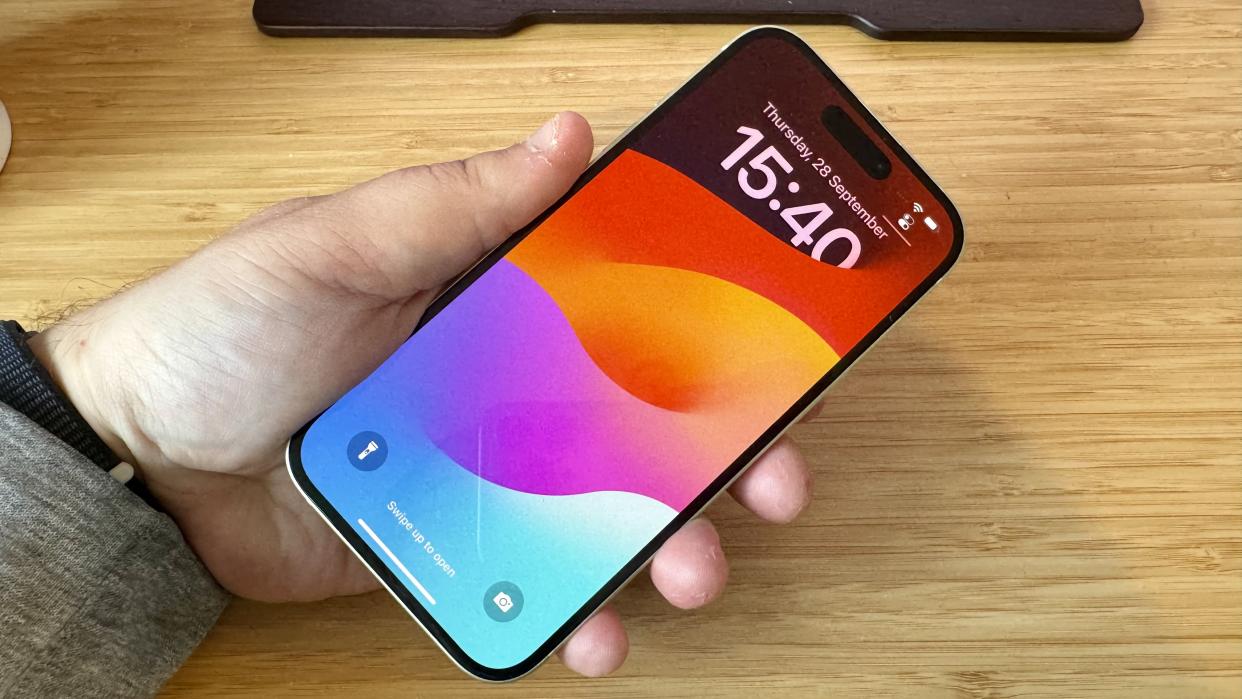
As I opened the box for my loan sample of the iPhone 15, I was reminded of how one of the best experiences involving iPhones and indeed any Apple products is the unboxing process.
All the boxes are so snugly put together, everything in them so neatly fitted, and the process of sliding the lid off and picking the covered handset out of the box feels almost delicate, a little mini-ritual.
However, while the normie iPhone was once the leader among the best camera phones, it's now been supplanted, firstly among its Apple brethren by its Pro/Pro Max companion, and secondly by an ever-expanding range of ambitious rivals. And right now, Apple doesn't just have to worry about Samsung; Google, Sony, OnePlus, Oppo, Xiaomi and more are offering some serious competition, not just in outright performance or screen tech, but cameras too, with 10x optical zooms (Samsung), 50MP, 1-inch Leica sensors (Xiaomi) or a host of other innovations.
So to compete, with the new iPhone 15 Apple has... given us last year's iPhone 14 Pro? Wait. What?
iPhone 15 review: Design and build
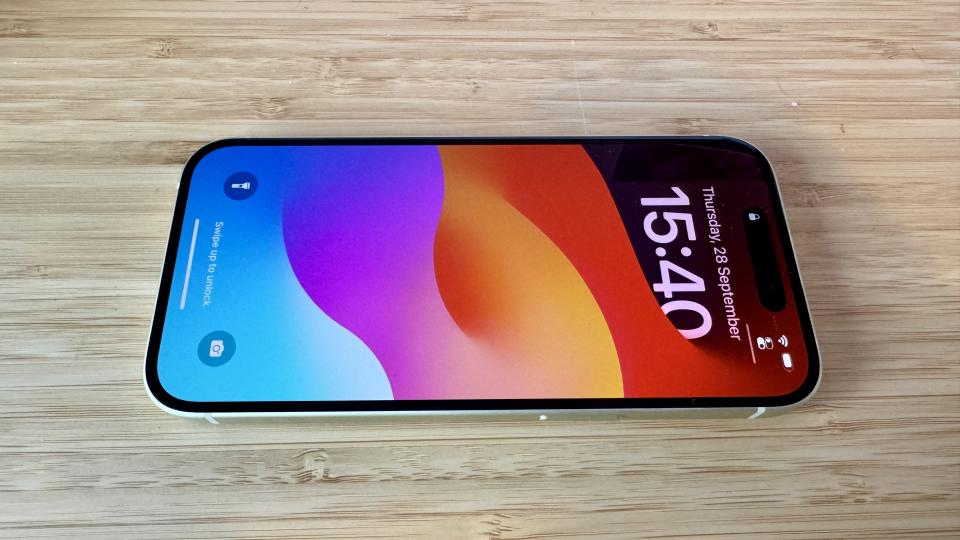
If you've ever seen an iPhone before, there isn't much that will particularly surprise you here. It's the same 6.1-inch case as before, with the rounded corners and thin, even bezels all round.
The 'big' design change here is on the bottom, where the good ol' lightning port has finally, finally, made way for a USB-C port. That means you don't have to stock a different charger for your iPhone than for all your other devices any more, which is good news. Less scintillating is the leisurely charging time (which I'll get to a little bit later)...
The casing is aluminium with a 'colour-infused glass back', which means it's made of reinforced glass, and the colour, instead of being applied on top of the material, is, yes, infused, into the glass itself.
There are five colour options on offer, Pink, Yellow, Green, Blue and Black. All variants are more of a hint of the colour stated, though, as the colour-infused glass has 'washed out' the colours. It's rather unique, though and while from many angles it simply looks white with a faint yellow accent, the texture and colour is more interesting up close. Real close.
Screen and features
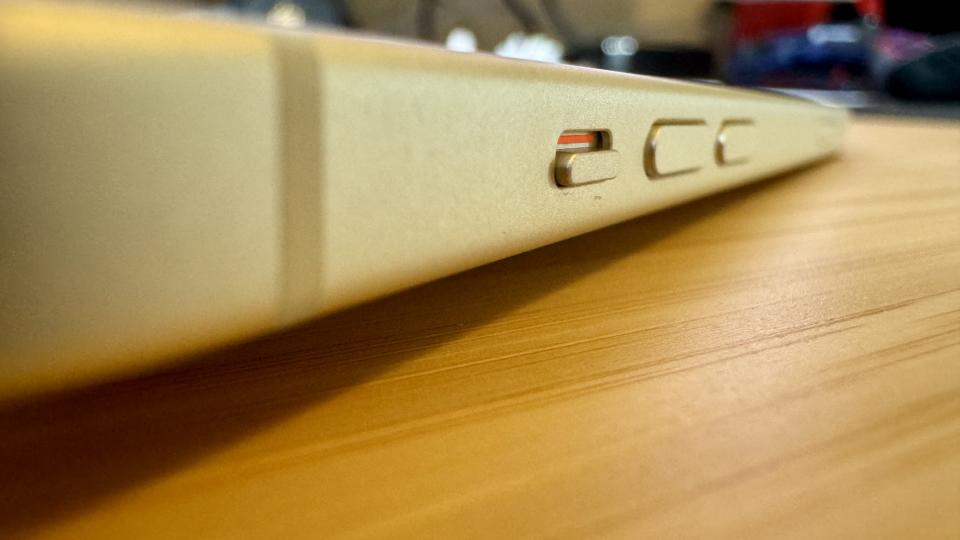
The screen is basically the same 6.1-inch XDR display as the 14 had (and the 13, for that matter). Yes, I know, if it ain't broke and all that. And it will feel intimately and immediately familiar to existing iPhone owners looking to upgrade. However, as a habitual Android user myself, who's gotten used to larger screens on 'regular-spec' models (such as the 6.4-inch Xiaomi 13, a direct rival), it feels a little small at first.
However, the sharpness, brightness and overall screen quality is superb as usual from Apple, so this quickly feels like a petty criticism. It's got a 2556x1179-pixel resolution at 460 ppi, with true blacks at a 2,000,000:1 contrast ratio and can hit a peak brightness of 2,000 nits in outdoor use (and 1,600 nits in indoor HDR mode). This is on par with leading rivals, and the nice little animations when scrolling around the phone feel vivid and lifelike.
A quick video test using a streaming service app revealed it does a really impressive job as a mini TV too, with a Star Wars: Ahsoka episode popping in vivid detail (if a bit small, perhaps not as Dave Filoni intended...), and the sound quality and volume is still among the strongest in any smartphone.
There's no Always-On feature here, like on the 15 Pro, and unlike the ProMotion display tech in the Pro, which offers a refresh rate of up to 120Hz, this is 'merely' an HDR OLED screen maxing out at 60Hz.
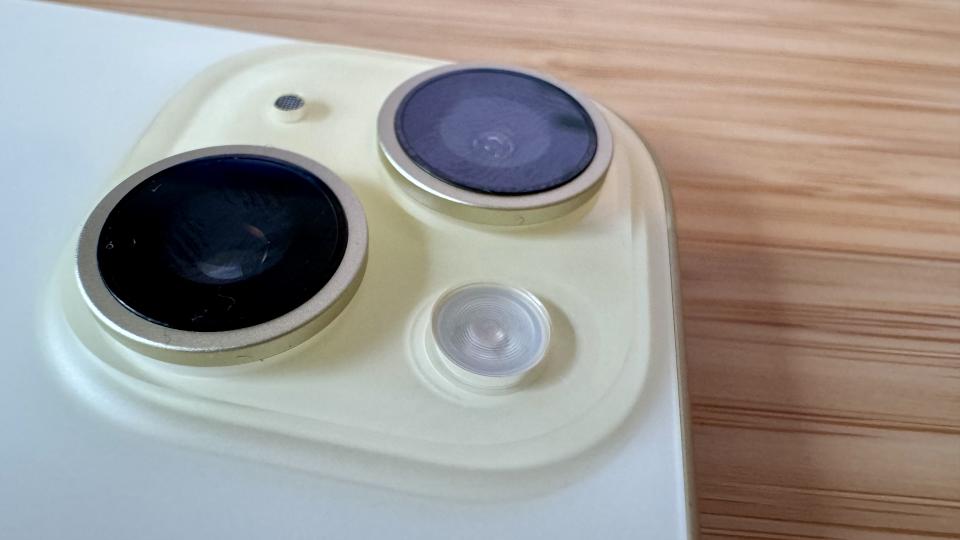
Devoted Apple fans will no doubt be delighted to find that the Dynamic Island is present here, ported over from the iPhone 14 Pro, and with even more functionality thanks to the updated iOS 17 on board. I know there was a big hoopla around its release and the fact it might be taking space away from an already-compact screen, but I really like it. It gives me a quick look at what's happening, shows me alerts and confirms that it's performing an action I want it to. Very nifty.
Also present from the 14 Pro is the A16 Bionic, with a 6-core CPU, 5-core GPU and a 16-core neural engine, which is a lower spec than you'll find in the iPhone 15 Pro, as that has the brand-spanking-new A17 Pro chip inside.
And even though we have a USB-C connection here, at long last, the now-ageing tech on the inside means that it only supports a USB 2 standard, so you won't get the faster 10Gb/s transfer speeds of the faster USB 3 standard on the Pro model.
One central feature that I'm always impressed by on Apple devices is the seamless pairing and connectivity between devices. When transferring apps between this and the Pro model I also have in for testing, the nearby share function means things move over automagically by simply placing the handsets side-by-side, and pairing my loan sample of the new Apple Watch Series 9 is done with a few simple confirmation taps and the OS takes care of the rest.
In fact, the ergonomics of the OS are still Apple's strongest venue. There's little to no bloatware, app setup is mostly effortless, setting up Apple Pay and the Wallet is easy but secure, and I quickly get to grips with where things are and how to navigate between them. User experience is the one place where Apple still has the clearest leg up on the frequently bloated and more confusing Android OS competition, and I'm glad to report that here, staying true to tradition works in Apple's favour.
Camera
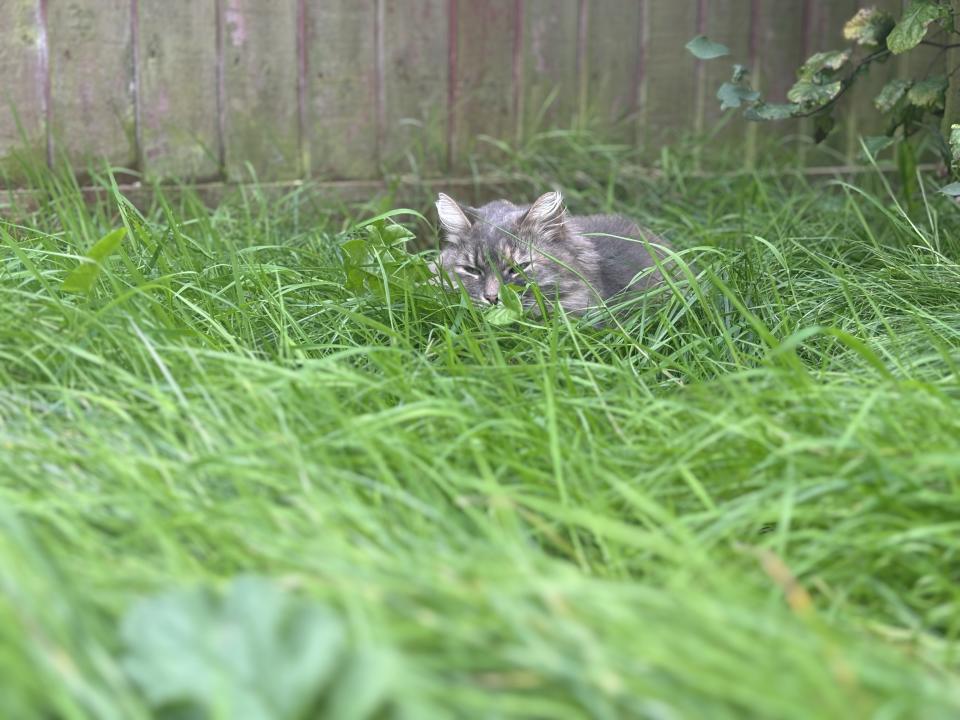
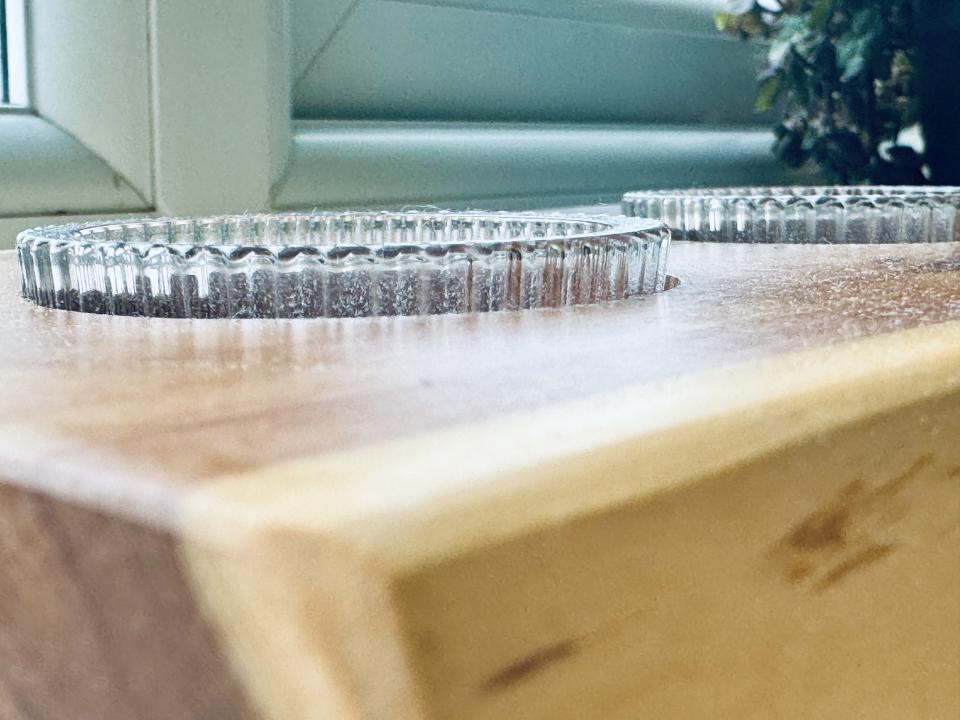

Tradition is also keenly felt when it comes to the camera, as it looks nearly identical from the outside. However, on the inside, the megapixel count has been stepped up from the 14, with the dual-camera system offering 48MP and ƒ/1.6 aperture in the main camera and 12MP and ƒ/2.4 aperture in the ultra-wide one (up from 12 ƒ/1.5 and 12 ƒ/2.4 respectively in the last model).
Image quality is also really good, like always, with the 'live photo' always a nice feature, and it outputs well-lit, sharp images, but my first impressions are that it doesn't quite match the latest Samsung Galaxy camera or the Xiaomi 13 Pro in terms of richness.
One nifty feature is that the camera automatically goes into Portrait mode when it recognises a person or animal in frame, which means that when you get to editing, you can edit the focus point even if you didn't manually switch to Portrait mode when snapping the picture.
Speaking of editing, I feel like Apple is lagging a little behind when it comes to the variety of editing options, such as filters on offer or fine-tuning options. However, the ability to copy your edits from one image and paste them to multiple images in the gallery menu means I could batch-edit a large number of photos in one go. Also, the auto effects were well applied, although I still don't see pro photographers flocking to the iPhone 15 camera over their DSLRs, due to the fact that while images will look very nice, they still won't look as natural as on a traditional camera. Again, that's where the Xiaomi 13 Pro camera has it beaten, with its Leica Authentic mode getting much closer to the natural feel than the iPhone does.
Of course, the 15 doesn't have RAW capture facility, which is present in the 15 Pro, so I'm interested to see whether that will make a difference for the Pro model this time around.
Battery life
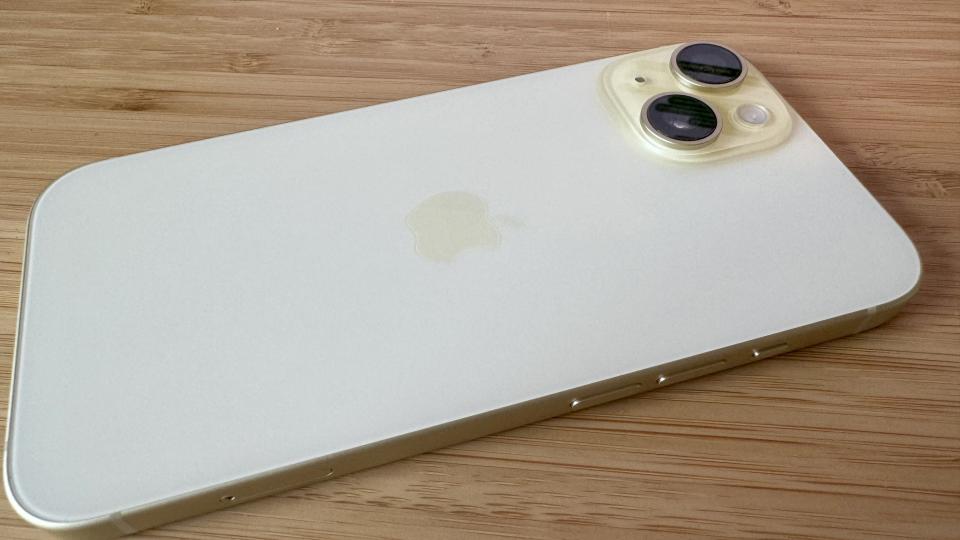
At the time of writing this hands-on review, I've only had the phone for about 25 hours, so I haven't taken it through any structured battery-testing yet. However, it lasted me well through my initial testing, with considerable juice still left this morning.
However, slightly more worrying is the charging speed as mentioned above. I've had phones in for testing recently that have a super-charge mode where you can charge it from empty to 90% in under 20 minutes, but it took the iPhone well over an hour to charge to full from around 12% this morning.
This is a luxury problem, yes, and perhaps it can be reasoned that Apple is thinking of long-term battery health here, but more likely is that rivals have caught up with and overtaken Apple when it comes to fast-charging devices in this hectic, always-on world, while the iPhone still relies on the same charging capacity as models several generations ago.
Price
The iPhone 14 is priced at £/$799, which is on par with similarly specced rivals. The Samsung Galaxy S23 is £/$50 more in vanilla mode, as is the Xiaomi 13, the other phone that I'd consider the iPhone's closest rival. So it looks like this time the iPhone might be the value proposition upward inflection question mark confused expression...
Should I buy the iPhone 15?
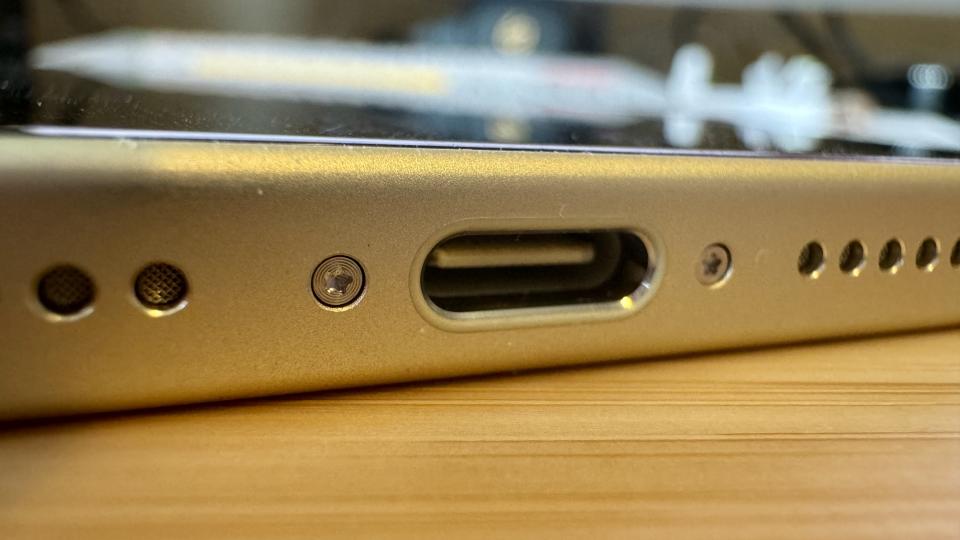
It's still very early to tell. I still haven't run a lot of creative apps on the iPhone 15 so still haven't gotten a firm grip on how it will suit creative pros and hobbyists. However, it's already clear that the camera is good, the screen is very good and the battery life, at first sight, is excellent as usual from Apple. However, the jury's still out on whether I would consider biting the bullet for the premium price of the better-specced iPhone 15 Pro, or just go for the 14, which retails at $/£699 at the moment... Check back in a couple of weeks when I've given it the full test.

